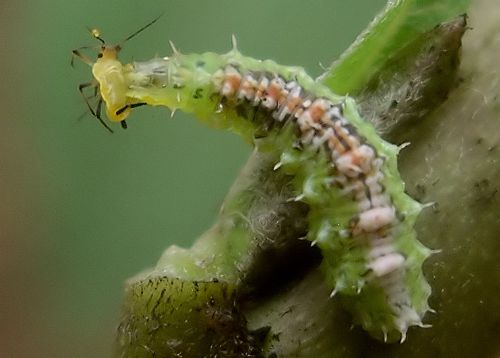by Valerie
July, 2011Hover Fly Larva
If you grow the milkweed plant commonly called butterfly-weed (tender perennial with yellow/orange flowers), then you have probably, on at least one occasion, seen it covered with yellow aphids. This pest is the oleander aphid (Aphis nerii), and that is the victim in the photo. If you have observed your milkweed's colony of aphids long enough, you have probably seen the predator as well, a hover fly larva (Pseudodorus clavatus). There are lots of kinds of hover flies, or flower flies (family: syrphidae), and most do not have any common name that is more specific. The adults are often mimics of bees and wasps and feed, as you might guess, at flowers. The larvae, or maggots, as baby flies are so fondly called, of many species are not readily found, but some of them are predators of such insects as aphids, scales, and true bugs. This particular species is quite common in our area and the odd, slug-like green larvae (which are only about 1/4 inch long) are invariably found in the midst of aphid infestations. They creep slowly along, devouring aphids in their path by sucking out their juices. The prey seem not to notice their presence, and will even crawl over the larvae. It is not a particularly dramatic sort of predation, but more of a slow motion grazing. However, given time, the combined efforts of the hover flies and ladybird beetles usually go a long way in controlling aphid populations. |